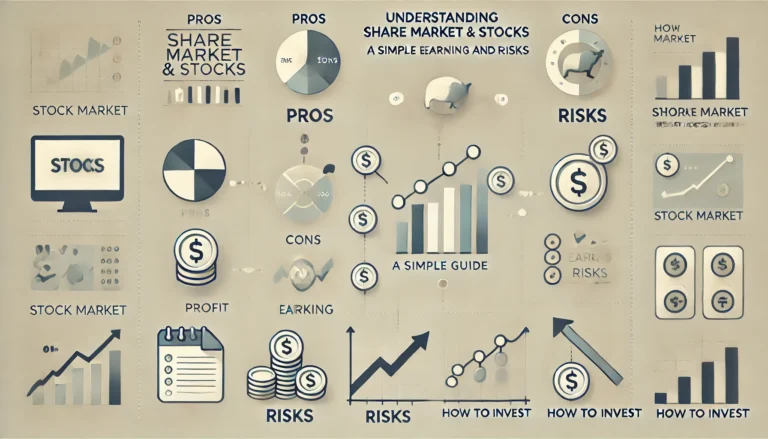The share market is a place where people buy and sell stocks. Stocks represent ownership in a company. When you buy a stock, you own a small part of that company. If the company grows and performs well, the value of your stock increases, allowing you to make a profit. However, if the company doesn’t do well, the stock price can fall, and you may lose money.
Pros of Investing in Stocks:
- Potential for High Returns: Stocks can offer higher returns compared to other investments like fixed deposits or bonds.
- Ownership in Companies: When you buy a stock, you own a portion of that company and benefit from its growth.
- Liquidity: Stocks are easy to buy and sell, making it a liquid investment option.
- Dividend Income: Some companies share profits with shareholders in the form of dividends, providing a regular income.
Cons of Investing in Stocks:
- Market Volatility: Stock prices can fluctuate rapidly due to market conditions, leading to potential losses.
- Risk of Losing Money: If a company performs poorly or the market crashes, you could lose your investment.
- Requires Knowledge: Investing in stocks requires understanding market trends and the companies you invest in.
- No Guaranteed Returns: Unlike fixed deposits, there’s no guaranteed return in the stock market.

How Can You Earn from Stocks?
You can earn in two main ways:
- Capital Appreciation: When the price of the stock increases, you can sell it for a profit.
- Dividends: Some companies pay regular dividends to shareholders, which is an additional source of income.
Risks Involved in Stock Market:
- Market Risk: The entire stock market can go down due to economic or political events.
- Company-Specific Risk: Poor performance or scandals in the company can lead to a sharp drop in stock price.
- Liquidity Risk: If there’s low demand for a stock, it can be hard to sell without lowering the price.
- Inflation Risk: The return on your investment may not keep up with inflation, reducing your purchasing power.
How to Invest in Stocks?
- Open a Demat Account: This account holds your shares in electronic form.
- Research Before Investing: Understand the company’s financials, business model, and market position.
- Diversify: Don’t put all your money into one stock. Spread your investments across different companies and sectors to reduce risk.
- Start Small: If you’re new, start with a small amount and gradually increase your investments as you gain experience.
By being aware of the risks and rewards, you can make informed decisions in the share market and work towards growing your wealth.
For more information, you can visit SEBI website.




Pingback: How to Earn Money While You Sleep: Top Passive Income Ideas - Blogger Bapu
Pingback: Swiggy IPO Allotment Date & Listing Details